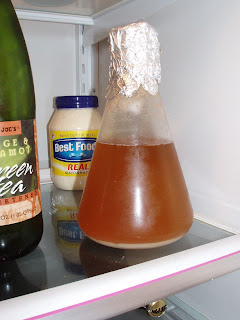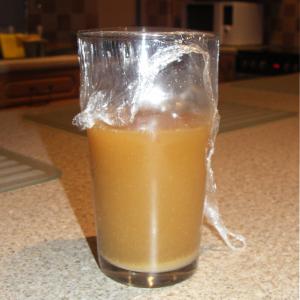If you make a starter, then the age of a yeast isn't really an issue. When you make a starter, and grow it, you're
replicating more yeast to make up for any loss. You're making new, fresh yeast.
Bobby M did a test on year old stored yeast here;
https://www.homebrewtalk.com/f13/testing-limits-yeast-viability-126707/
And my LHBS cells outdated tubes and packs of yeast
dirt cheap 2-3 dollars each and I usually grab a couple tubes of belgian or other interesting yeast when I am there and shove it in my fridge.
and I have never had a problem with one of those tubes.
I usually make a starter but I once pitched a year old tube of Belgian High Gravity yeast directly into a 2.5 gallon batch of a Belgian Dark Strong, and after about 4 days it took off beautifully.
The purpose of a starter is to reproduce any viable cells in a batch of yeast....that;s how we can grow a starter form the dregs in a bottle of beer incrementally...and that beer may be months old.
Even if you have a few still living cells, you can grow them....That's how we can harvest a huge starter (incrementally) from the dregs in a bottle of some commercial beers. You take those few living cells and grow them into more.
Also Activity in a starter really only means one thing and one thing only.
It doesn't matter one blip in your fermenter or your starter flask if the airlock bubbles or not (if you are using an airlock and not tinfoil if you are using tinfoil, you aren't getting bibbling anyway,) or if you see a krauzen. In fact starter fermentation are some of the fastest or slowest but most importantly, the most boring fermentations out there. Usually it's done withing a few hours of yeast pitch...usually overnight when we are sleeping, and the starter looks like nothing ever happened...except for the little band at the bottom. Or it can take awhile...but
either way there's often no "activity" whatsoever....
I usually run my stirplate for the first 24 hours, then shut it down, if you are spinning your starter it is really hard to get a krausen to form anyway, since it's all spinning, and there's often a head of foam on it from the movement.
All that really matters is that creamy band o yeast at the bottom.
This is a chilled sample so it's flocculated, but even with an unchilled sample you should see a band of yeast at the bottom. Here's an unchilled version
Same thing, a band.
As it is I've only ever seen two or three krausens actually on my starter (one blew off a bunch of krausen and knocked the tinfoil off the flask,) and the evidence of one on the flask at the "waterline" once. But I've never not had a starter take off.
Look for the yeast at the bottom, don't worry what it looks like on top.
If you have yeast on the bottom....that's all you really need.
If it looks anything like that, your are ready to either feed it again, or use it.





